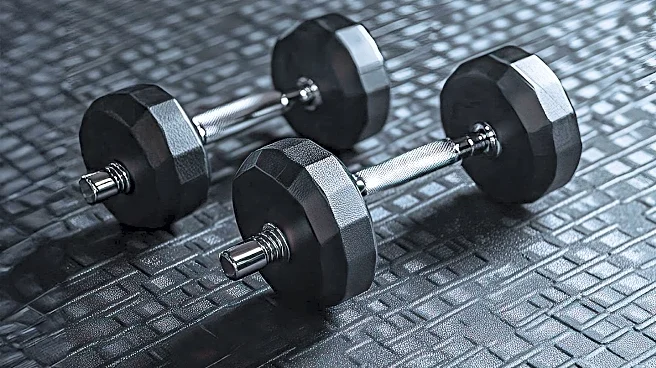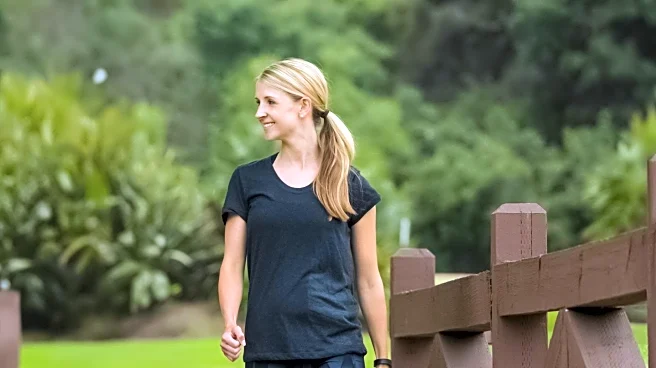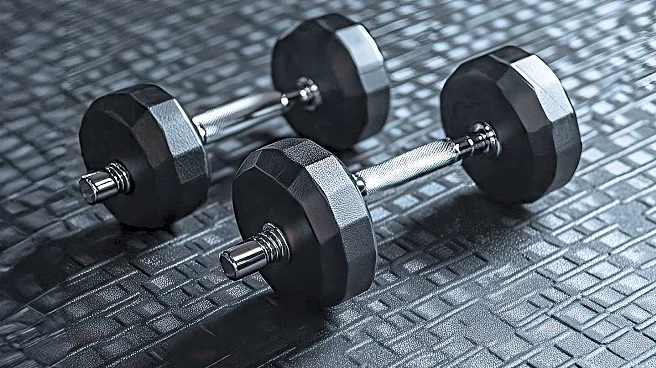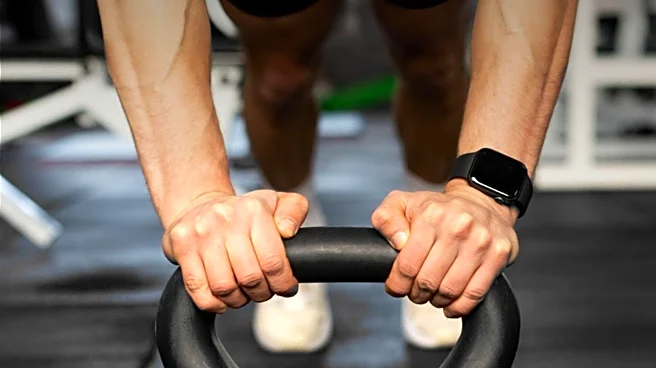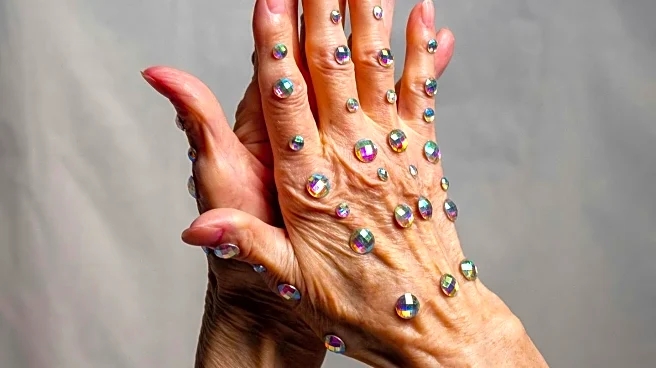What's Happening?
Reena Vokoun, a yoga and fitness instructor and founder of Passion Fit, has highlighted the importance of maintaining muscle mass as individuals age, particularly after 40. She notes that hormonal changes and a reduction in muscle fiber quality and protein
synthesis make it more challenging to build muscle. To combat this, Vokoun recommends a workout routine that includes three specific dumbbell exercises: the squat and overhead press, reverse lunge with biceps hammer curl, and deadlift into upright row. These exercises are designed to work multiple muscle groups simultaneously, including the quadriceps, hamstrings, core, glutes, triceps, biceps, shoulders, and lower back. Vokoun advises beginners to start with bodyweight versions of these exercises to perfect their form before adding resistance bands or weights.
Why It's Important?
The emphasis on maintaining muscle mass is crucial for aging populations, as muscle deterioration can lead to decreased mobility and increased risk of injury. By incorporating strength training into regular fitness routines, individuals can improve their overall health and longevity. The exercises recommended by Vokoun not only target muscle strength but also enhance cardiovascular fitness when performed at a faster pace. This holistic approach to fitness can help individuals maintain an active lifestyle, reduce the risk of chronic diseases, and improve quality of life as they age.
What's Next?
As more people become aware of the benefits of strength training, fitness programs may increasingly incorporate these types of exercises into their offerings. Gyms and fitness instructors might also focus on educating clients about the importance of muscle maintenance and provide tailored programs for different age groups. Additionally, there could be a rise in demand for fitness equipment like dumbbells and resistance bands as individuals seek to implement these exercises at home.
Beyond the Headlines
The growing awareness of the importance of strength training in aging populations could lead to broader societal changes, such as increased investment in public health initiatives that promote physical activity among older adults. This shift could also influence the fitness industry to develop more inclusive and accessible programs that cater to the needs of an aging demographic.
